
Chunky by Amina Leila
CHUNKY tells a light-hearted story of a vivacious African American girl who loves herself unapologetically. Zozo’s enthusiasm will inspire others to honor their bodies…even when their bodies are different.

CHUNKY tells a light-hearted story of a vivacious African American girl who loves herself unapologetically. Zozo’s enthusiasm will inspire others to honor their bodies…even when their bodies are different.

A new, non-diet approach to adopting healthy eating habits! Drawing on the same evidence-based practices introduced in Intuitive Eating, this workbook for teens addresses the ten principles of intuitive eating to help you listen to your body’s natural hunger and fullness cues.
Do you struggle with stress eating, overeating, emotional eating, or binge eating? You aren’t alone. Sometimes, when we’re not feeling so good, food can seem like a great comfort. The problem is that over time, overeating can lead to several physical health problems, as well as depression and lowered self-esteem. So, how can you put a stop to unhealthy eating behaviors before they become ingrained, lifelong habits?
With this breakthrough workbook, you’ll learn to notice and respect your body’s natural hunger and fullness signals, find real eating satisfaction, cultivate body positivity, and build a profound connection to your mind and body for years to come. Each chapter includes an important principle of intuitive eating, and includes worksheets and activities to help you connect with and deepen your skills.
Whether you’re a teen, a parent, a clinician, or a certified intuitive eating counselor, this proven-effective workbook is an essential resource.

Finding out your child has an eating disorder may be some of the most difficult news youve ever received. Eating disorders are clouded in misunderstanding and misinformation, and having one in the family can feel very isolating.
As you organize treatment and recovery for your child, here are five things you can do to set yourself up for success.
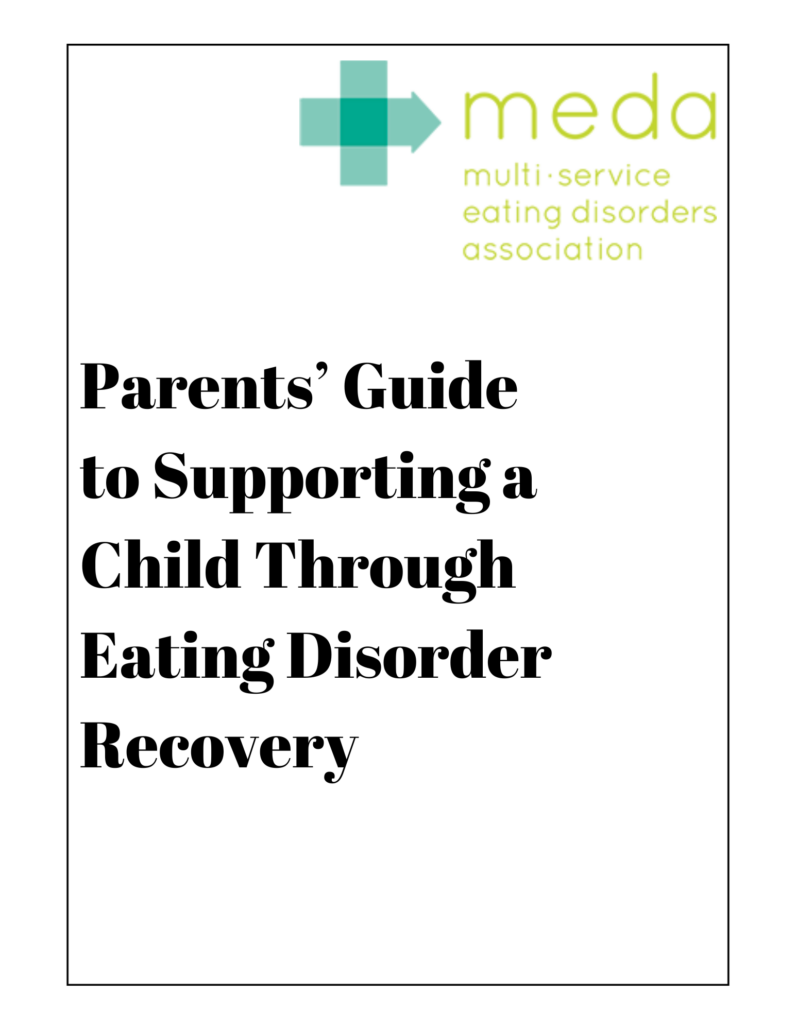
This brief guide strives to assist parents in supporting their child through treatment.

You are the best at knowing yourself and the degree to which your preoccupations with food and body image interfere with your life. If you answer yes to any of the questions in this questionnaire, it may be an indication that you may benefit from support around food, weight, and/or exercise.

Exercise and movement play a complicated role with eating disorders. While exercise certainly has its benefits, when taken to the extreme, it may be a sign of destructive coping. This resource discusses healing one’s relationship to compulsive exercise.
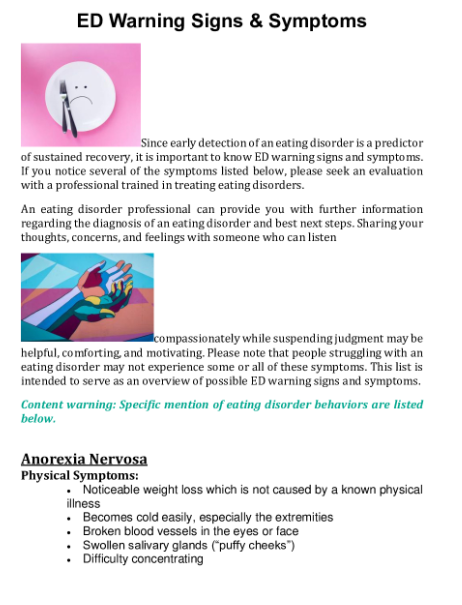
Since early detection of an eating disorder is a predictor of sustained recovery, it is important to know ED warning signs and symptoms. If you notice several of the symptoms listed below, please seek an evaluation with a professional trained in treating eating disorders.

Written by an eating disorder survivor and activist, Good Enough is a realistic depiction of inpatient eating disorder treatment, and a moving story about a girl who has to fight herself to survive.
Love Your Body introduces the language of self-love and self-care to help build resilience, while representing and celebrating diverse bodies, encouraging you to appreciate your uniqueness.
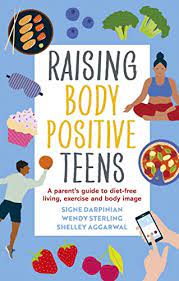
In a world fraught with diet-culture and weight stigma, many parents worry about their child’s relationship with their body and food. This down-to-earth guide is an invaluable resource allowing parents to take proactive actions in promoting a friendship with food, and preventative actions to minimize the risk factors for the development of eating disorders.
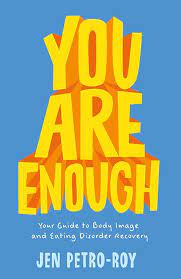
This nonfiction self-help book for young readers with disordered eating and body image problems delivers real talk about eating disorders and body image, provides tools and information for recovery, and offers suggestions for dealing with the media messages that contribute so much to disordered eating.

A body-positive guide to help girls ages 8 to 12 navigate the changes of puberty and grow into women.
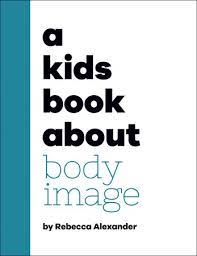
This book shares positive ways kids can think about their body, their feelings about it, and how to love it the way it is.

A manifesto for parents to help them reject diet culture and raise the next generation to have a healthy relationship with food and their bodies.

Fat Talk is a stirring, deeply researched, and groundbreaking book that will help parents learn to reckon with their own body biases, identify diet culture, and empower their kids to navigate this challenging landscape. Sole-Smith draws on her extensive reporting and interviews with dozens of parents and kids to offer a provocative new approach for thinking about food and bodies, and a way for us all to work toward a more weight-inclusive world.
Virginia Sole-Smith (she/her) writes about diet culture, anti-fat bias, feminism and health. She is a journalist whose latest book is, Fat Talk: Parenting in the Age of Diet Culture
A Letter to Your Child’s Doctor
Can I Have Another Snack? podcast is an exploration of appetite, identity, and bodies. We talk about how we feed ourselves and our kids (in all senses of the word!), and the ingredients we need to survive in diet culture. Were sitting with the questions: who or what are we nurturing? And who or what is nurturing us? Hosted by Laura Thomas – anti-diet nutritionist and author of the Can I Have Another Snack? newsletter.
For busy parents who want a regular dose of body-positive parenting wisdom, this podcast features conversations with experts from a wide range of fields
Eating Disorders Among Reasons Why College Students Consider Leaving College
By Timberline Knolls
Many students are thinking about leaving college, and their struggles with mental health concerns like eating disorders are a major reason why.
A survey of 2,000 college students, parents, and family members found that nearly 40% of students thought about leaving their academic institutions within the past year. For some, lack of mental health support was a key factor behind their doubts about whether they should complete their degrees, with 77% of respondents reporting struggles with an eating disorder.
Nationally, eating disorders affect about 11%-17% of cisgender women and 4% of cisgender men on college campuses across the country. These devastating illnesses also impact 12.3% of gender-expansive college students, 11.1% of genderqueer and gender-nonconforming students, 10.5% of transmasculine students, and 6.3% of transfeminine students in the United States.
A challenging time
The college years can be a challenging time for young adults, one that comes with stressors they may not have encountered before. Students typically contend with a much less structured environment than that of high school, and they must learn to balance an intense workload with making new friends.
“College can be a time of a lot of excitement and stimulation and also a lot of stress,” Alison Baker, M.D., a child and adolescent psychopharmacologist, told Child Mind Institute. “It asks young people who are not yet adults to act in a very adult way, especially if they’re contending with mental illness and suddenly have to begin managing it on their own.”
For transgender, genderqueer, and gender-nonconforming students, those stressors are often compounded by other factors in their lives. College might be the first time they have the freedom to explore their gender identities, and that can lead to an intense focus on body shape or size. Others may encounter people or policies that reject their gender identities, leading to severe distress or potential gender dysphoria.
Finding a sense of control
There are many reasons why a college student might develop an eating disorder, but a need for control and a drive for perfection often top the list of risk factors for this age group.
When so many things might feel completely out of their hands, the way they eat or shaping how their body looks might become the one area of their life that they feel like they can control during such a stressful time. This can be particularly true for students who struggle with perfectionism.
Many college students may feel intense anxiety if they don’t get things right in every aspect of their lives. They may feel overwhelmed if their grades aren’t perfect or they aren’t making friends as quickly as they thought that they would.
The new environment, stress, and drive to control it all can be the perfect storm that leads a college student to develop an eating disorder. And without the right support, many students are now worried that they won’t make it to graduation, according to the survey.
Getting to graduation
If a college student thinks that they may have an eating disorder, it’s important that they get a professional assessment to determine the type and level of care that is right for them. The best place to start is at a student’s college health center, which can allow them to access treatment right on campus and experience the least amount of interruption to their academic career.
But not all colleges and universities have the resources to help students who are struggling with mental health concerns like eating disorders. That doesn’t mean that help isn’t available. Students can also reach out to their primary care provider or find a facility that specializes in eating disorder treatment.
Eating disorders can impact people at any age, but they often affect young adults as they head off to college. But with the right support, college students can find recovery and enjoy successful academic careers.

Can You Predict That a Teen Will Develop an Eating Disorder? by Timberline Knolls Staff
Are there factors that may predict a young person is more likely to develop an eating disorder later in life? Researchers think so and they say this information could offer a chance to help teens at the earliest signs of trouble.
Factors That May Predict Eating Disorders in Adolescents
Researchers conducted a longitudinal study of 1,623 adolescents starting when the teens were 14 years old. They then followed up with the participants when they were between the ages of 16-19. Throughout the course of the study, the researchers identified several factors that may indicate a young person is at a higher risk for developing an eating disorder [1]:
The researchers’ findings also suggested that teens who have attention-deficit/hyperactivity disorder (ADHD) or a personality disorder were more likely to struggle with the compulsion to restrict their food intake, binge-eat, or purge their food.
“Given the interwoven nature of both childhood psychiatric disorders, namely [ADHD] and adolescent affective disorders with eating disorder symptoms, greater clinical awareness and prompter recognition of psychiatric comorbidities by primary care teams are essential,” the study authors told Medscape Medical News.
The teenage years are undoubtedly a complex time, but these behaviors do not always indicate a young person is troubled by urges they can’t control. It’s critical for their loved ones and healthcare providers to talk to them about how they’re feeling about their bodies and their self-image.
Improving Eating Disorder Prevention Among Teens
The predictors the researchers identified can go a long way in getting teens help sooner. But it’s even more critical to apply these equitably so that every young person has a chance to succeed.
Sadly, healthcare providers often underdiagnose eating disorders in racial minority teens, causing a disparity among those who receive treatment and, ultimately, better outcomes. Researchers evaluated data from interviews with more than 10,000 U.S. adolescents ages 13-18. They found that [2]:
While it’s clear that eating disorders affect young people regardless of their race, the researchers found that white teens were nearly twice as likely to be diagnosed with an eating disorder as teens of color [2].
“There is a stereotype that [eating disorders] affect only skinny, white, affluent girls, leaving out numerous people who do not fit that stereotype and contributing to disparities in treatment and diagnosis,” Kendrin Sonneville, Sc.D., R.D., the study’s lead author, told Medscape Medical News.
Setting aside myths and stereotypes about eating disorders allows us to apply these predictors more equitably — and that is a major step toward preventing more teens from struggling with these devastating conditions.
References:
[1] Brooks, M. (2020, December). Can eating disorders be predicted? Medscape. https://www.medscape.com/viewarticle/942403.
[2] Yasgur, B., & Vega, C. (2018). Eating disorders: Are we missing men and minorities? Medscape. https://www.medscape.org/viewarticle/895435.
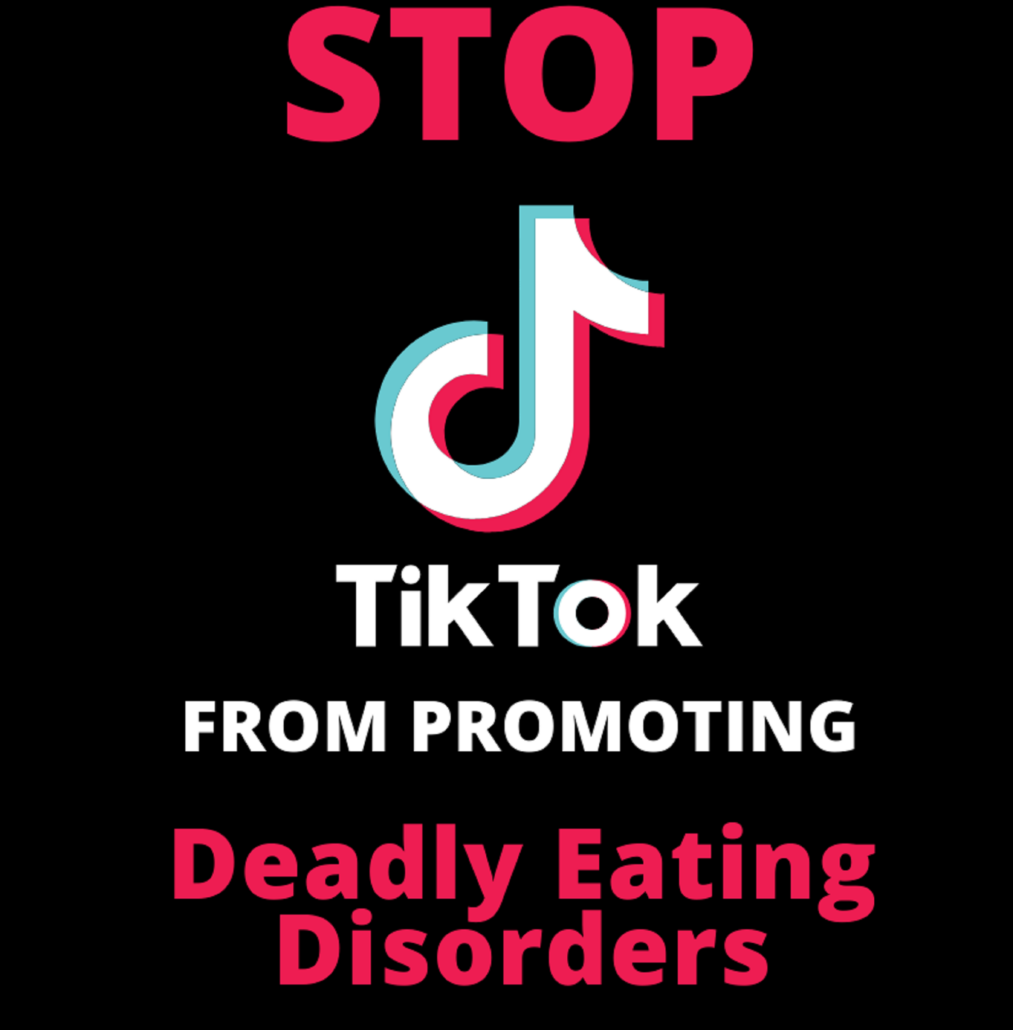
TikTok and Its Effect On Your Teen by Rebecca Manley, MS, CTC, CCTP, MEDA Founder
Dieting is the most common precipitating factor in the development of an eating disorder. In the United States alone, 30 million people struggle with an eating disorder and every 62 minutes someone loses their life due to direct complications of their eating disorder.
As a teen coach, recently I have had increasing numbers of clients talk about the weight loss posts suggested to them on TikTok AND how these posts are harming their mental health and well-being.

41% of TikTok’s 800 million monthly users are between the ages of 16-24. This age group is already at a heightened risk of eating disorders and to encourage them to diet further is can be detrimental to their long-term mental and physical health. By promoting dieting and weight loss, as well as before and after transformations, TiKToK is perpetuating dangerous weight stigma, which is the second most common type of discrimination after gender. Weight stigma can increase body dissatisfaction, a leading risk factor in the development of eating disorders.
Adults think with their prefrontal cortex, the brain’s rational part, which helps with decision making, good judgment and an awareness of long-term consequences. On the other hand, teens tend to process information with the amygdala, the emotional part of their brain. In teen’s brains, the connections between the emotional part of the brain and the decision-making center are not fully developed until age 25 or so.
TikTok exposes tweens/teens with developing brains to weight loss messages constantly. Currently, children of any age can view these harmful messages and videos. TikTok accounts #dailyweightlosstips has 560 million views and #weightloss transformation (fat phobia fuel) has 28 million.
Many of these viewers are watching the videos, comparing themselves, which may lead them to engage in unhealthy behaviors, such as skipping meals, using fad diets, drinking home-made weight loss concoctions, drinking diet teas or excessively exercising. Our teens are not aware of the health risks associated with these actions. Dietary supplements, like teas and powders, are associated with serious health risks and side effects including organ failure, testicular cancer, heart attack, stroke and even death.
What can you do to protect your child?
*Talk with your child about the dangers of dieting and engaging in diet culture.
*In addition, watching weight loss videos and engaging in unhealthy weight loss behaviors leads to body dissatisfaction. The result of these behaviors can result in the development of a deadly eating disorder. They certainly result in lowered self-confidence and increases in anxiety and depression.
*Be a positive role model and talk about your body in an affirming way.
*Focus on health not weight in your house. Don’t push your child to eat and don’t push your child to restrict.
*Promote body positivity and diversity in your home and community.
*Discuss the importance of appropriate activity with your child. Emphasize the importance of moving for pleasure and how it helps our bodies feel better. Do not equate exercise with weight loss.
*Monitor your child’s social media use. Children under the age of 11 (6th grade) should not be engaging in social media.
*Slowly add social media to your child’s technology diet. Add one app at a time. See how they handle one before adding more. In addition to people, consider following a nature, cultural or arts app.
*Friend or follow your child on all social media outlets.
*Sign the TikTok petition at https://bit.ly/3cwTqdS to ensure that children under the age of 18 are unable to post or view videos under all weight loss categories.
If you think your child maybe struggling with an eating disorder or poor body image, MEDA can help. Contact us at info@medainc.org or call us at 888-350-4049. THE SOONER THE BETTER
How Parents Can Spot an Eating Disorder in Their Child
Written by: Caroline Rudnick, MD | Family Medicine Physician, McCallum Place
Early Signs and Symptoms of an Eating Disorder in Your Child or Adolescent
 Our culture and media spend a lot of time thinking, talking, blogging and watching videos about dieting, food choice, weight loss, and exercise. Amid this wave of information, our children can get caught up in information that is misleading, misinformed or simply harmful. Combined with the stresses of childhood, this focus on food, appearance, and exercise can contribute to some children and adolescents developing disordered eating behaviors or fully diagnosable eating disorders.
Our culture and media spend a lot of time thinking, talking, blogging and watching videos about dieting, food choice, weight loss, and exercise. Amid this wave of information, our children can get caught up in information that is misleading, misinformed or simply harmful. Combined with the stresses of childhood, this focus on food, appearance, and exercise can contribute to some children and adolescents developing disordered eating behaviors or fully diagnosable eating disorders.
Sometimes these disorders go unrecognized for a period of time, and a child may lose a substantial amount of weight or suffer other medical effects. Because early detection of an eating disorder improves the chances of recovery it is important for parents to know the signs and symptoms of anorexia, bulimia, binge eating disorder, and other disordered eating behaviors.
Signs and Symptoms of an Eating Disorder in Your Child or Adolescent
We often see kids skipping meals, wanting to prepare their own meals, eating alone, avoiding whole groups of foods, counting calories, grams of fats or carbohydrates, or being very picky about food. Sometimes kids will be overly concerned about the nutritional value of food and spend a lot of time reading, thinking and researching food, calories, and diet choices.
Other Signs that Should be Noticed by Attentive Parents
Children spending a lot of time in the bathroom after meals may be an indication that purging is occurring. Binge eating is often discovered when food is suddenly missing from the household supply. Children or teens who are obsessively exercising or secretively exercising are likely struggling with body image distress and concern about weight, size, and shape. Of course, noticing weight loss or sudden weight change is important as these can indicate an eating disorder or another medical issue which would merit the attention of a physician.
Finally, a child’s appearance can offer clues to health concerns or disordered eating behaviors. Kids with eating disorders will often appear pale and withdrawn. Their clothes may no longer fit or they may begin wearing baggy clothes or out-of-season winter clothes to hide their appearance.
Seek Professional Help for Your Child or Teen
If you notice any of these things in your child, please seek medical attention for the possibility of an eating disorder or another medical problem. Your first appointment should be with a medical professional who is confident and educated on the symptoms of an eating disorder. Your doctor may also recommend working with a licensed therapist or a registered dietitian. To find resources in your area or to have a free assessment completed by an eating disorder professional contact McCallum Place at (314) 957-5042.
This blog was originally published at https://www.mccallumplace.com/about/blog/parents-can-spot-eating-disorder-child/ on December 10, 2018 and is republished here with permission.

Written by Clementine Portland Clinical Director Zanita Zody, PhD, LMFT
Zanita guides her team with warmth and compassion as they provide comprehensive care to the  adolescents who entrust their treatment in them. In this week’s blog post, Zanita shares tips on how to support your adolescent as they get ready to make the transition back to school.
adolescents who entrust their treatment in them. In this week’s blog post, Zanita shares tips on how to support your adolescent as they get ready to make the transition back to school.
Transitions represent points of vulnerability. Imagine breaking down a cardboard box. It is along the points of transition that one focuses. Similarly, life transitions increase vulnerability to a variety of mental health concerns. In fact, most eating disorders develop during transitions. Because your children are still learning to manage the stress and emotions that come with transitions such as returning to school, they are at an increased risk of returning to familiar behaviors.
There are several things you can do to help support success through this transition:
While returning to school can be frightening, with your support and open communication the return to “normalcy” can help facilitate a renewed sense of meaning and purpose, moving your child further towards recovery.
For more information about Clementine adolescent treatment programs, please call 855.900.2221, subscribe to our blog, and connect with us on Facebook, Twitter, and Instagram.
This blog was originally published at http://clementineprograms.com/supporting-your-adolescent-with-the-back-to-school-transition/ on August 21, 2018 and republished here with permission.

Written by Simone Arent of Walden Behavioral Care
 One of the biggest obstacles of eating disorder recovery may come after being discharged from a residential program. Helping your adolescent integrate back into their day to day routine can be challenging for everyone. Remember, recovery is not linear. There may be ups and downs as your family navigates returning to home, school, extracurricular activities, and most likely embarking on treatment in lower levels of care. Here are a few tips to help support this transition.
One of the biggest obstacles of eating disorder recovery may come after being discharged from a residential program. Helping your adolescent integrate back into their day to day routine can be challenging for everyone. Remember, recovery is not linear. There may be ups and downs as your family navigates returning to home, school, extracurricular activities, and most likely embarking on treatment in lower levels of care. Here are a few tips to help support this transition.
1.) Cultivate Trust and Open Communication
At the very beginning of the recovery process, trust may need repair. In order to restore trust, open and honest communication is encouraged. Creating transparent and nonjudgmental dialogue between family members can help to decrease shame and lend itself to improved understanding of one another–and the eating disorder. Individuals often find residential treatment to be a place that feels safe to discuss their feelings and thoughts related to their eating disorder. A goal would be to continue this progress at home following discharge. I often tell parents that cultivating an environment where candid discussion about the eating disorder feels comfortable, can help take the power away from the eating disorder, and increase confidence and motivation for recovery.
2.) Identify Triggers
Triggers can be defined as events that create some type of uncomfortable emotion for an individual. Some common emotions that are often reported in those living with eating disorders are shame, guilt, anxiety, sadness and stress among others. In order to best prepare for recovery success outside of treatment, it is crucial to have some understanding about what the triggers are for the individual and for the family. The goal then would be to create a game plan of how–as a family–you can cope in a safe and contained way when those uncomfortable emotions arise. Your treatment team can be great collaborators in helping you to identify these triggers and in brainstorming some helpful coping skills that might be appropriate to use in those difficult moments.
3.) Incorporate Supervision to Support Recovery
Following discharge, one challenge many families face is the increased need for supervision of the adolescent. Going from an environment with 24-hour supervision back home, can feel shocking to many adolescents who may have been in treatment for an extended period of time. After residential care, supervision of all meals and snacks is highly recommended. This added necessary precaution might be difficult with all of the other commitments you might have, so sometimes I suggest that parents/caregivers enlist the help of trusted friends and family for extra support. Oftentimes, schools are more than willing to provide space for the adolescent to be monitored for snack and lunch. In the beginning, supervision can be a lot to balance. Remember that the end goal is to eventually decrease supervision as trust is repaired and the eating disorder has less control.
4.) Ask for Help!
Supporting and caring for someone with an eating disorder can challenge a person or family system in ways you weren’t expecting. The road to recovery can also be long. We want to avoid burnout and running on empty so it will be important for caregivers to have space to talk about their experience and discuss strategies for managing their own emotions. These spaces can support caregivers in feeling and processing things as they arise. We often recommend that parents seek their own therapeutic support through avenues such as parent support groups in addition to family or individual therapy. In order to support your adolescent effectively, taking care of yourself is of utmost importance. Remember you are not alone, and it is okay to ask for help
To learn more about residential treatment at Walden Behavioral Care, please visit https://www.waldeneatingdisorders.com/residential/.
Simone Arent is an adolescent clinical intern at Residential treatment, providing individual, group, and family therapy to adolescents. Simone received her Bachelor’s degree in Psychology from Western New England University, and is currently in pursuit of her Doctorate degree in Clinical Psychology at William James College. Simone works to meet each individual where they are at by using a strength-based approach, and incorporating dialectical and cognitive behavior therapies. In Simone’s free time, she enjoys being outdoors and solving Rubik’s Cubes.
This blog was originally published at https://www.waldeneatingdisorders.com/4-recommendations-for-parents-of-an-adolescent-discharging-from-residential-eating-disorder-treatment/ in March 2018 and is republished here with permission.

Every 52 min someone dies from complications due to an eating disorder and 28.8 million people in the US will struggle with an eating disorder.
Donate Now! Healing Shop

